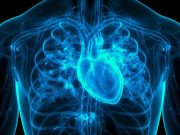Tag: Atrial Fibrillation
ESC: Catheter Ablation Aids Symptomatic Atrial Fibrillation, End-Stage Heart Failure
Patient benefits seen for all-cause mortality, implantation of a left ventricular assist device, or urgent heart transplantation
Catheter Ablation for Atrial Fibrillation Cuts Risk for Dementia, Death
Findings persisted across age, sex, and comorbidities
Incidence of A-Fib Reduced With Vitamin D₃ Supplementation
Risk for atrial fibrillation lower with 1,600 IU/day and 3,200 IU/day vitamin D3 supplementation
A-Fib Linked to Increased Odds of MCI, Dementia in Women
Women with atrial fibrillation and normal baseline cognition had higher risk of disease progression from normal to MCI, MCI to dementia
Early Treatment Can Be Initiated for A-Fib Patients With Stroke
Incidence of primary end point ranged from reduction of about 2.8 percent to increase of about 0.5 percent
Menstrual Cycle Length Linked to Cardiovascular Disease Outcomes
Women with irregular cycles have increased hazard ratios for CVD events and atrial fibrillation
Bleeding-Linked Hospitalization Up With Amiodarone in A-Fib
Risk up with amiodarone versus flecainide or sotalol among seniors with atrial fibrillation receiving apixaban or rivaroxaban
Statin Use Cuts Five-Year Stroke Risk for Patients With Atrial Fibrillation
Benefits across stroke types seen in duration-dependent manner
Preterm Birth, Large for Gestational Age Increase A-Fib Risk Up to Middle Age
Small for gestational age only tied to higher risk during childhood
Premature Atrial, Ventricular Contractions Linked to Cardiovascular Events
Premature atrial contractions linked to increased risk for atrial fibrillation; premature ventricular contractions linked to heart failure














